To properly care for your indoor tea herb garden, you need to recognize each herb's specific watering needs. Mint likes more moisture, while chamomile prefers drier conditions. Always check the top inch of the soil; if it's dry, give it a thorough watering. Avoid waterlogging by using pots with drainage holes. Water during the morning with room-temperature water to optimize absorption. Be cautious of common mistakes, like overwatering, which can lead to root rot. Keep an eye out for signs of stress in your herbs, and you'll be well on your way to success. Discover more secrets to thriving herbs!
Understanding Tea Herb Water Needs

Tea herbs generally require consistent moisture to thrive, but it's crucial to understand their specific water needs. Each herb has a unique preference, so you'll want to familiarize yourself with the varieties you're growing. For instance, mint loves a bit more moisture, while chamomile prefers slightly drier conditions.
When watering, check the top inch of the soil; if it feels dry, it's time to water. Aim for deep, thorough watering to encourage strong root growth, but avoid waterlogging, which can lead to root rot. Confirm your pots have drainage holes to help prevent excess moisture buildup.
Consider the humidity levels in your home as well. A dry environment can increase the frequency of watering, while higher humidity might mean you can wait a bit longer between watering sessions.
Temperature plays a role too; during warmer months, your tea herbs may need more water. Conversely, in cooler months, they might require less.
Factors Influencing Water Requirements
Several key factors influence how much water your indoor tea herbs need.
First, consider the type of herb you're growing. Different herbs, like mint and chamomile, have varying water requirements. Mint, for instance, thrives in moist soil, while chamomile prefers drier conditions.
Next, think about the pot size and material. Larger pots retain moisture longer, reducing the frequency of watering. Additionally, materials like terracotta absorb moisture, impacting how quickly the soil dries out.
Light exposure plays a significant role, too. Herbs in bright light need more water as they lose moisture through evaporation. If you've got your herbs near a sunny window, you may need to adjust your watering schedule.
Humidity levels in your home can also affect water needs. In a dry environment, your herbs might require additional watering, while higher humidity can help retain moisture.
Lastly, seasonal changes matter. During warmer months, your herbs will likely need more water compared to the cooler seasons.
Best Watering Techniques
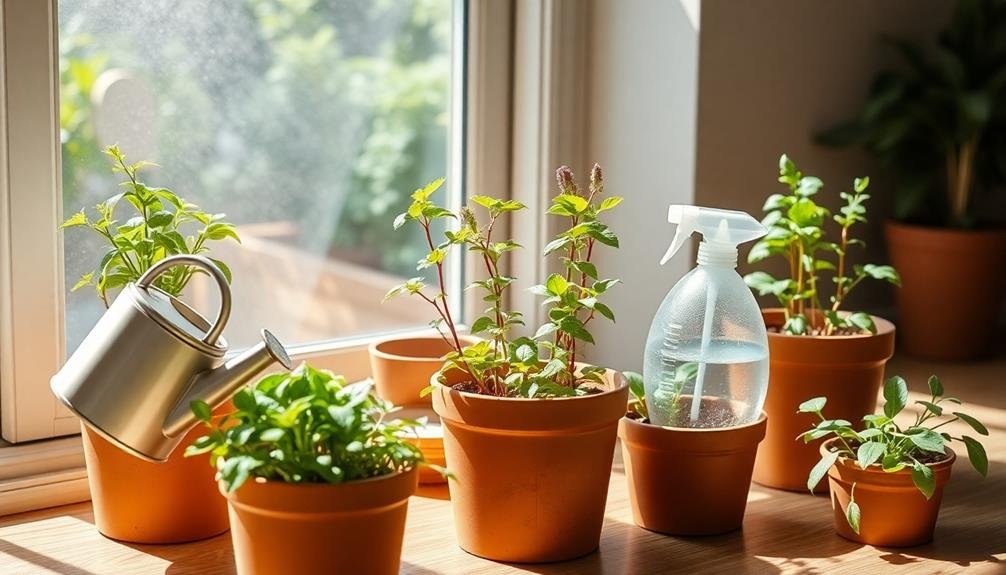
When it comes to watering your indoor tea herb garden effectively, using the right techniques can make all the difference. Start by checking the soil moisture before watering. Stick your finger about an inch into the soil; if it feels dry, it's time to water.
Use room-temperature water to avoid shocking the roots. Water your herbs slowly and evenly, allowing the moisture to seep in rather than pooling on the surface. Consider using a watering can with a narrow spout for better control.
It's best to water in the morning, as this allows the plants to absorb moisture before temperatures rise. If you're using a self-watering pot, verify the reservoir isn't empty and that the wicking mechanism is functioning properly.
Keep an eye on humidity levels in your home. If your environment is dry, you might need to mist the leaves occasionally to maintain adequate moisture.
Common Watering Mistakes
Overwatering is one of the most common mistakes indoor gardeners make, and it can lead to serious problems for your tea herbs. When you give your plants too much water, the roots can drown, preventing them from absorbing vital nutrients. This often results in weak, unhealthy growth.
Another mistake is using cold water straight from the tap. Cold water can shock your plants, disrupting their natural growth cycle. Instead, let your water sit for a few hours or use room temperature water to prevent any shock.
Don't forget to check the drainage of your pots. If water can't escape, it'll build up and cause root rot. Verify your pots have adequate drainage holes and consider using potting soil designed for herbs to promote better drainage.
Lastly, you might be tempted to water on a strict schedule. But every plant has unique needs, so it's crucial to assess the moisture level of the soil regularly. Stick your finger into the soil about an inch deep; if it feels dry, it's time to water.
Signs of Overwatering and Underwatering

Recognizing the signs of overwatering and underwatering is essential for maintaining healthy tea herb plants.
If you're overwatering, you might notice yellowing leaves, which can signal root rot. The soil will feel constantly soggy, and you may even see mold or fungus developing on the surface. In this case, cut back on watering and verify your pots have proper drainage.
On the flip side, underwatering presents its own set of issues. You'll likely see wilting leaves that feel dry to the touch, and the soil will be parched and crumbly. Affected plants might also exhibit leaf drop, especially in hotter weather. If you notice these signs, it's time to give your herbs a good drink of water.
To achieve the right balance, check the moisture level in the soil regularly. Stick your finger about an inch into the soil; if it feels dry, water your plants. If it's still moist, wait a few days before checking again.
Frequently Asked Questions
Can I Use Tap Water for My Tea Herbs?
Yes, you can use tap water for your tea herbs, but it's best to let it sit for a few hours first. This helps chlorine and other chemicals dissipate, ensuring healthier growth for your plants.
How Often Should I Check Soil Moisture Levels?
You should check soil moisture levels at least once a week. Stick your finger about an inch deep; if it feels dry, it's time to water. Consistent monitoring helps prevent over or under-watering.
Is Filtered Water Better for Indoor Plants?
Filtered water's often better for indoor plants because it removes chlorine and other chemicals. You'll notice improved growth and health when you use it. Just make sure it's at room temperature before watering.
Can Humidity Affect My Watering Schedule?
Yes, humidity definitely affects your watering schedule. Higher humidity means your plants lose moisture more slowly, so you might not need to water as often. Conversely, lower humidity can dry them out quicker, requiring more frequent watering.
What Time of Day Is Best for Watering?
Watering in the early morning is best, as it allows plants to absorb moisture before the sun heats up. It also reduces evaporation and helps prevent fungal issues. So, grab that watering can and get started!
In Summary
By following this ideal watering guide, you can create a thriving indoor tea herb garden. Remember, understanding your herbs' specific water needs and the factors that influence them is key. Use the best watering techniques to keep your plants healthy while avoiding common mistakes. Keep an eye out for signs of overwatering or underwatering to guarantee your herbs flourish. With a little care and attention, you'll enjoy a bountiful harvest of fresh tea herbs right at home!

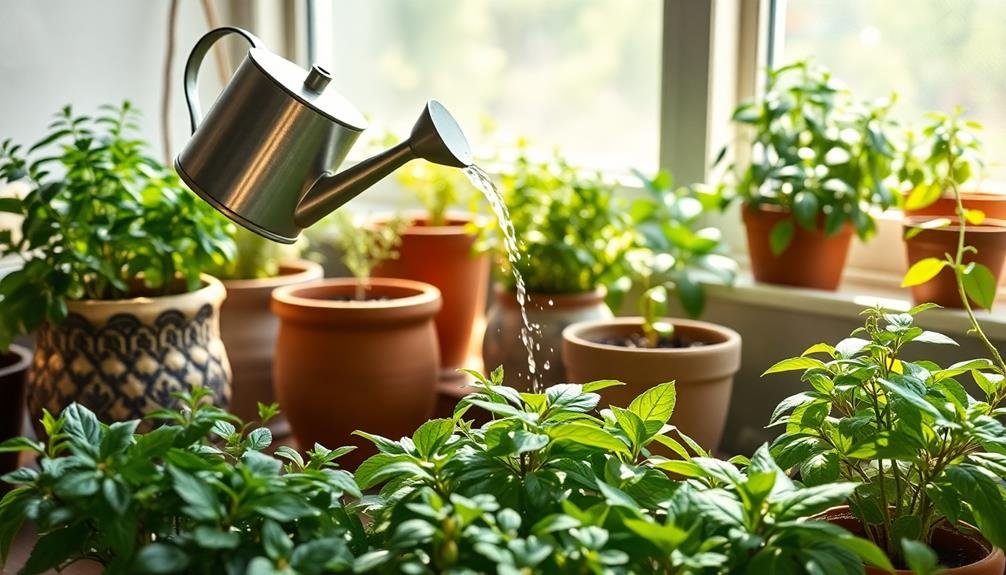
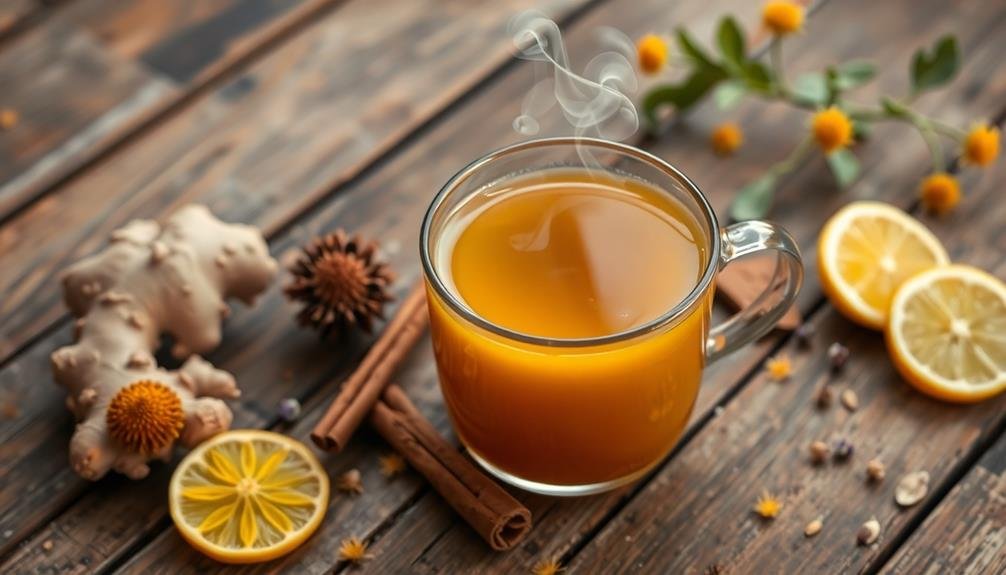
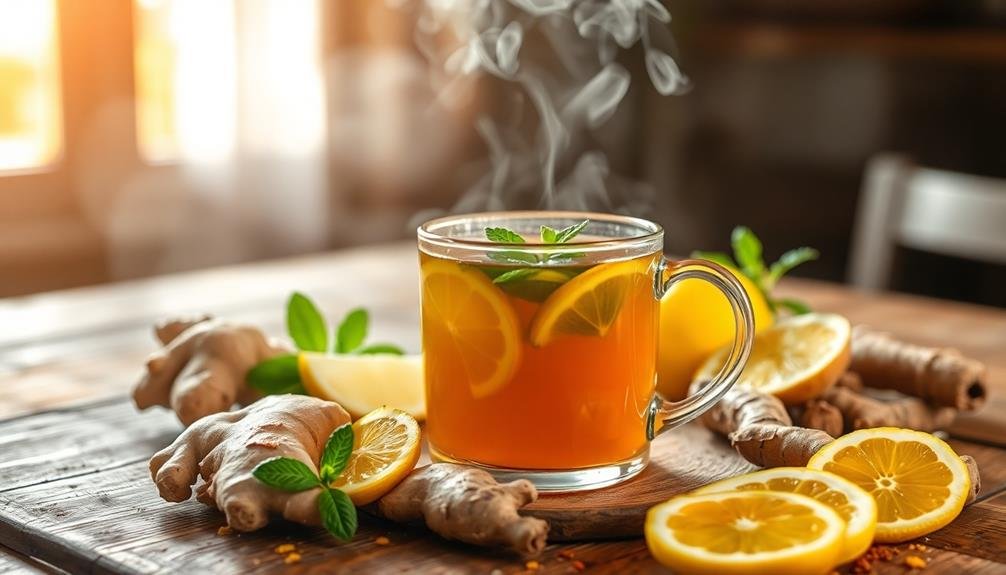
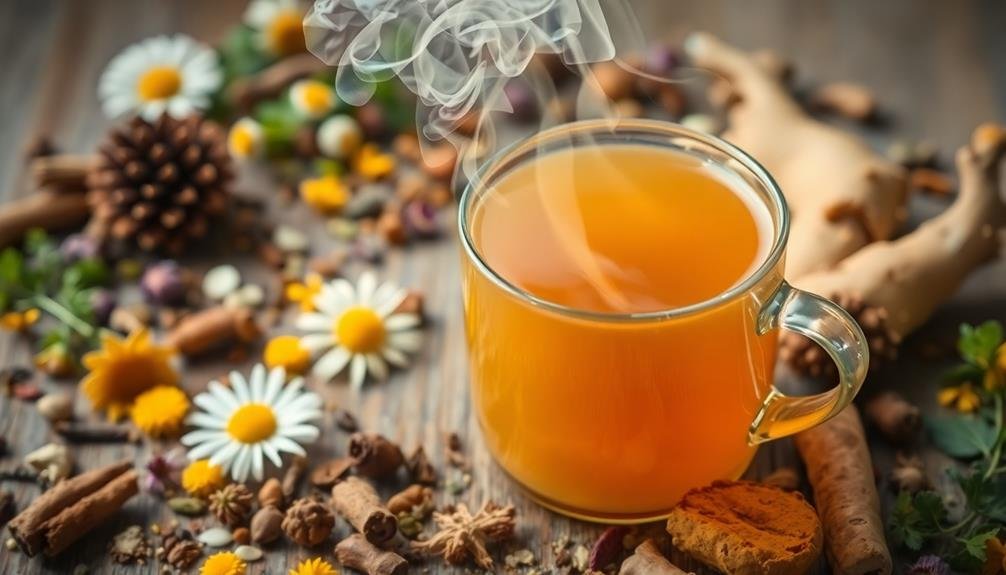
Leave a Reply